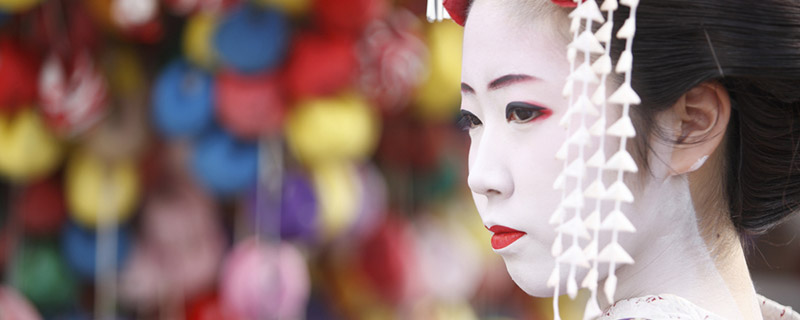The Geisha
Geisha, also known as geigi or geiko, are female Japanese entertainers who work as performers during gatherings, events, and other special occasions. They sing, dance, or engage their guests in conversations and games to make them enjoy their experience.
Geisha Training Process
Traditionally, training to become a geisha started at four years of age. It involved learning how to play different traditional instruments (such as the drums, shakuhachi and shamisen), calligraphy, games and traditional songs. Young geisha were also taught various dances featuring stylised gestures and movements to tell a story, and instructed in how to choose and wear kimono, as well as how to carry themselves and interact with clients.
Today, girls who wish to become geisha are required to attend school, at least graduate from middle school, and be older than 15 years of age before they are allowed to decide for themselves if this is the career path they really want to take.
Geisha Districts
Kyoto, a former capital of Japan, is still known for its thriving geisha districts. These places, which are known as hanamachi, were built before and during the Edo period and are popular for their geisha restaurants, teahouses, and other establishments.
Gion
Consisting of five geiko communities Gion is Japan’s most popular geisha district. It has been named a national historical preservation district, and its streets and buildings have been restored to maintain its traditional Kyoto atmosphere.
Every year, there are public performances held in Gion, including the Miyako Dori, or “Dances of the Old Capital”, which is held during the entire month of April, during the peak of cherry blossoms season. These events have always been well-attended by visitors from other Japanese cities and countries in the world.
Kamishichiken
Located in the northwest portion of Kyoto, Kamishichiken is Kyoto’s oldest geisha district. Its name literally translates to “Seven Upper Houses”, in reference to its seven teahouses constructed with the use of leftover materials and equipment from the Kitano Shrine restoration project during the Muromachi Period, about 500 years ago.
Every year, on 25 February, the Kitano Tenmanu-gu in Kamishichiken holds the Plum Blossom Festival, an event where geisha and maiko serve tea and wagashi to around 3,000 guests in an open-air tea ceremony.
Also during April, the district observes another annual event known as the Kitano Odori, which features the Kitano Kabuki, a type of Kyo-mai dance that showcases the Hanayagi-ryu style.
Miyagawacho
Known for its three-ring trademark, a symbol that represents the harmony and unification of its three important aspects — townspeople, shrines and temples, and teahouses, Miyagawacho is a historical spot in Kyoto, situated near the Kamo River.
In the past, geisha gathered in Miyagawacho to perform at its numerous theatres located along the river banks. Today, the district is filled with teahouses and theatres that offer kabuki and various entertainment spectacles.
Pontocho
With many well-preserved buildings and architecture, Pontocho is another important historical geisha district of Kyoto. It is popular for its many traditional teahouses, geiko houses, and theatres.
Pontocho’s cobbled streets are lined with traditional lamp posts, lit by lanterns, with bars, eateries, restaurants, brothels, and other establishments operating into the late hours of the night.
Tourism
Tourists who want to experience the geisha culture may take part in the following activities:
Geiko dinners – These are generally expensive and are booked through travel agents and top rated hotels. A full geiko dinner package, in which a geiko hostess will serve you your meals and converse with you, may cost up to 80,000 yen.
Dress up as a geiko – Tourists may avail themselves of a geiko studio service in Kyoto and be costumed and have their faces made up as a geiko. They can then walk around the old district and have their photos taken. This may cost about 10,000 yen.













